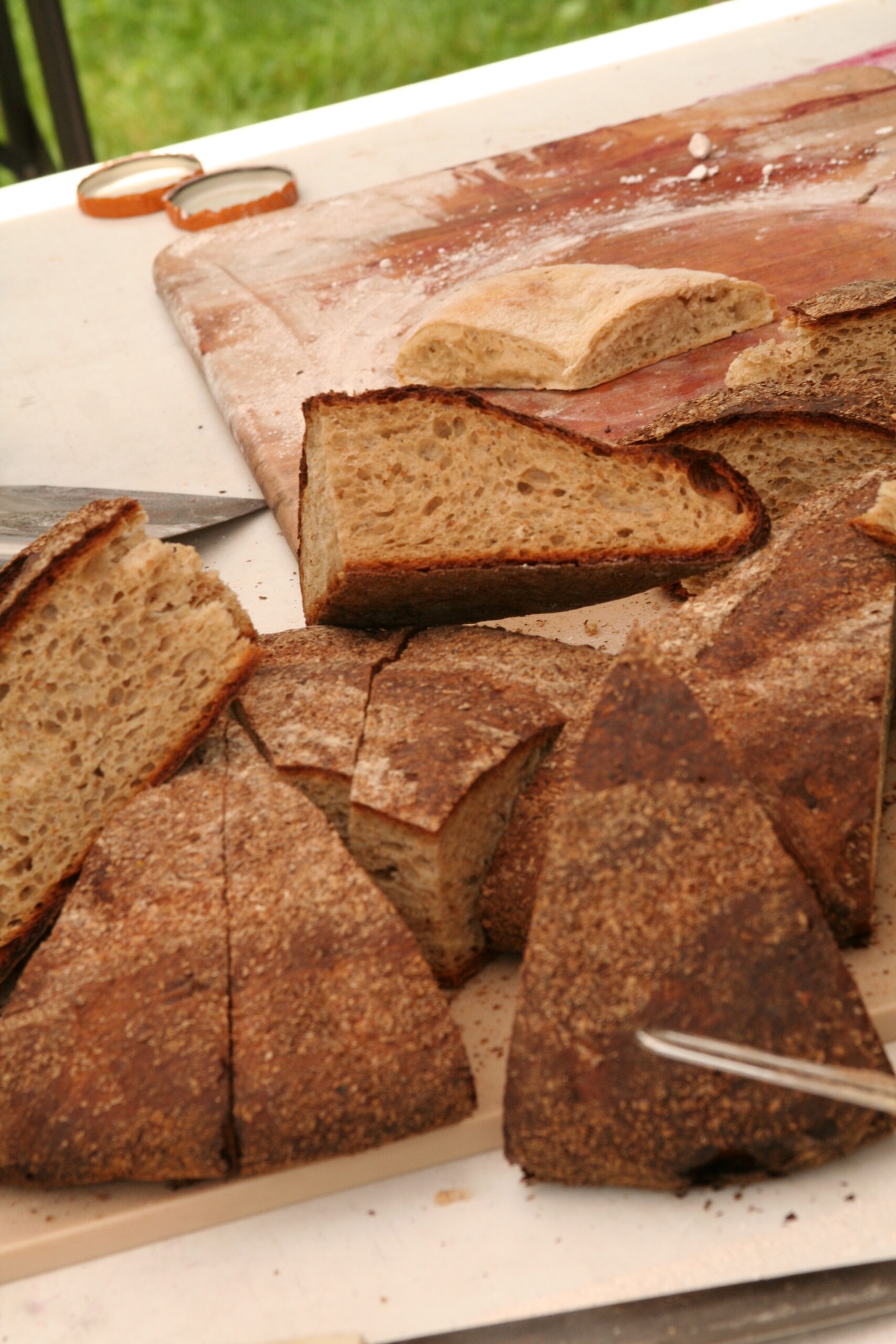Miche
By James MacGuire
MICHE POINTE-A-CALLIERE
00:00 (hours) Refresher Culture
30 g (1 ounce) chef (from a previous dough or culture)
35 g (1.2 ounces) King Arthur Unbleached All-Purpose Flour*
25 g (.77 ounce) water
TOTAL Refreshed Culture:
90 g (3.0 ounces)
06:00 (hours) Levain
90 g (3.0 ounces) refreshed culture
100 g (3.3 ounces) King Arthur Unbleached All-Purpose Flour
70 g (2.1 ounces) water
TOTAL Levain:
260 g (8.4 ounces)
12:00 (hours) Final Dough
715 g (1 pound 3 ounces) King Arthur Unbleached All-Purpose Flour
150 g (5.25 ounces) King Arthur Whole Wheat flour
1 pound 3.9 ounces (1 pound 3.9 ounces Must correct to 70%) water (total = 70%)
260 g (8.4 ounces must correct to 70%) total levain
18 g (.63 ounce) salt
Yield: 1748 g (3.76 lbs correct to 70% water amount)
*These loaves are usually made using a less refined flour (i.e. more toward whole wheat). Here we are mixing white and whole wheat to approximate this. If you find a less refined flour, use it, but remember that the dough might require more water.
Final Dough Directions:
–Put the whole wheat flour, and approximately half of the white flour into a bowl and swirl in the salt. Put the levain into the center, and pour the water over it. Use fingertips to break the levain into the water while bringing flour in from the sides to form a smooth, liquid dough (this will only take 2 or 3 minutes). Add the rest of the white flour, and mix to form a rough dough. Cover, and allow to rest for 5 minutes.
—Instead of kneading as such, use one hand to pick up the dough from the sides and fold it into the center while the other hand turns the bowl. After 10 or 12 folds, the dough should form a loose ball and begin to come at least partially away from the sides. Now is the best time to make corrections if the dough is too firm or too liquid. The ideal consistency is looser and stickier than most people are used-to, but when ready, should be relatively smooth, elastic, and not stick excessively to the hands or a work surface. The most important factor is the consistency, because the fermentation will compensate for underkneading.
Dough Fermentation Schedule:
0:00 (hours) Kneading finished, dough covered with plastic.
1:00 (hours) Fold the dough over itself gently to degas and stimulate fermentation, cover.
2:00 (hours) Fold once again
3:00(hours) yet another fold.
3:30 to 4:00 (hours) By this point, the fermentation should appear very active. If it isn’t, and especially if you have kneaded less and are counting on the fermentation to compensate, give the dough yet another gentle fold, and wait for another 45 minutes. If and when ready, if making 1 large loaf, round it into a loose, round shape ( if not, divide the dough into 2 or perhaps 3 pieces, and do the same). Place on lightly floured surface, cover, and allow to rest for about 30 minutes.This rest lets the dough ‘relax’ so that it won’t tear during shaping.
Shape loaves as desired. Place, seam up, into lightly floured banneton baskets or proofing linens. Cover, and allow to rise in a draft-free place.
Fermentation of Shaped Loaves:
This should take 1 1\2 to 2 hours. Although the loaves will be denser than yeast-raised loaves, the criteria for oven readiness are the same: a finger indentation should disappear slowly but completely after 2-3 seconds.
Baking:
Preheat oven and baking stone to 450°F. Just before baking, place the dough on a peel, seam side down, and slash with razor blade. Slide the dough from the peel onto the baking stone, and add steam before quickly shutting the oven door. After 10 minutes, reduce the oven temperature to 400 degrees. The baking should take almost an hour and a half for large loaves, and 60 minutes or so if divided into 2 or 3 pieces. To this end, the oven may be turned down further when the crust begins to color (after about 20 minutes into the bake) to assure a long bake and a crispier crust.

